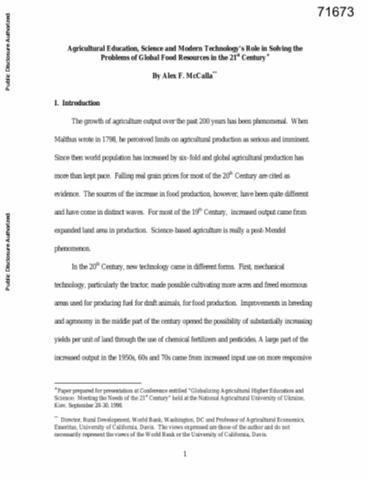Resource information
The growth of agriculture output over the past 200 years has been phenomenal. When Malthus wrote in 1798, he perceived limits on agricultural production as serious and imminent. Since then world population has increased by six-fold and global agricultural production has more than kept pace. Falling real grain prices for most of the 20th Century are cited as evidence. The sources of the increase in food production, however, have been quite different and have come in distinct waves. For most of the 19th century, increased output came from expanded land area in production. Science-based agriculture is really a post-Mendel phenomenon. In the 20th century, new technology came in different forms. First, mechanical technology, particularly the tractor, made possible cultivating more acres and freed enormous areas used for producing fuel for draft animals, for food production. Improvements in breeding and agronomy in the middle part of the century opened the possibility of substantially increasing yields per unit of land through the use of chemical fertilizers and pesticides. As we look to the 21st century, this conference is asking a critical question about the role of knowledge, science and technology in meeting future global food needs.


